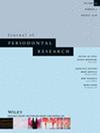Excessive occlusal force with periodontitis leads to rapid alveolar bone resorption. However, the molecular mechanism by which inflammation and mechanical stress cause bone resorption remains unclear. We examined the role of Piezo1, a mechanosensitive ion channel expressed on osteoblasts, in the changes in the receptor activator of nuclear factor-kappa B ligand (RANKL)/osteoprotegerin (OPG) ratio in mouse MC3T3-E1 osteoblast-like cells under Porphyromonas gingivalis lipopolysaccharide (P.g.-LPS) and mechanical stress.
To investigate the effect of P.g.-LPS and mechanical stress on the RANKL/OPG ratio and Piezo1 expression, we stimulated MC3T3-E1 cells with P.g.-LPS. After 3 days in culture, shear stress, a form of mechanical stress, was applied to the cells using an orbital shaker. Subsequently, to investigate the role of Piezo1 in the change of RANKL/OPG ratio, we inhibited Piezo1 function by knockdown via Piezo1 siRNA transfection or by adding GsMTx4, a Piezo1 antagonist.
The RANKL/OPG ratio significantly increased in MC3T3-E1 cells cultured in a medium containing P.g.-LPS and undergoing mechanical stress compared to cells treated with P.g.-LPS or mechanical stress alone. However, the expression of Piezo1 was not increased by P.g.-LPS and mechanical stress. In addition, phosphorylation of MEK/ERK was induced in the cells under P.g.-LPS and mechanical stress. MC3T3-E1 cells treated with P.g.-LPS and mechanical stress when cocultured with RAW264.7 cells induced their differentiation into osteoclast-like cells. The increased RANKL/OPG ratio was suppressed by either Piezo1 knockdown or the addition of GsMTx4. Furthermore, GsMTx4 inhibited the phosphorylation of MEK/ERK.
These findings suggest that P.g.-LPS and Piezo1-mediated mechanical stress induce MEK/ERK phosphorylation and increase RANKL expression in osteoblasts. Consequently, this leads to the differentiation of osteoclast precursor cells into osteoclasts.


